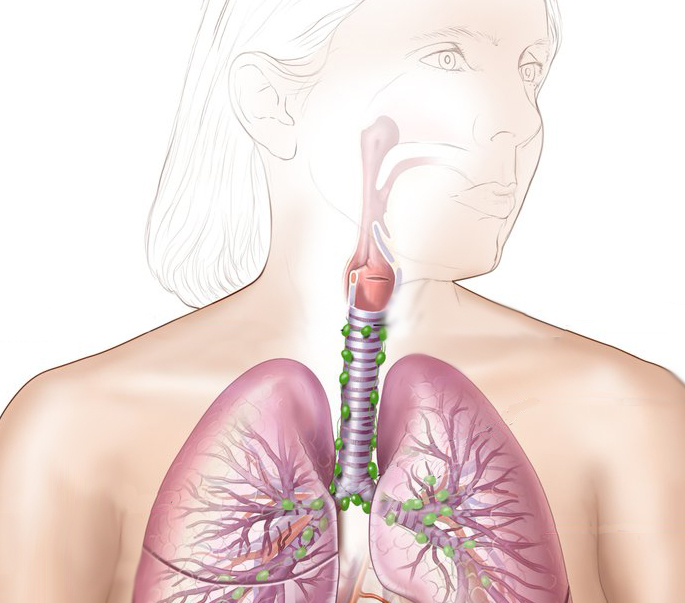NIBIB-funded bioengineers develop promising technique to build tracheas for implantation

The trachea, or windpipe, extends from the voicebox to the opening of the lungs. Source: NCI (adapted)
A team led by Eben Alsberg, Ph.D., professor of Biomedical Engineering and Orthopaedic Surgery, and director of the Alsberg Stem Cell & Engineering Novel Therapeutics (ASCENT) Lab, Case Western Reserve University, has developed a strategy to engineer multi-tissue tracheas that have a cartilage structure, moist lining, and blood vessels similar to a natural trachea. In a study in the Feb. 14, 2018, issue of Advanced Science, they implanted the engineered tissue under the skin of mice, where the blood vessels showed signs of connecting with surrounding tissue.
The researchers used stem cells from bone marrow in constructing rings of cartilage that they stacked as trachea-like tubes. They successfully grew the moist layer, or epithelium, lining the structure using cells from human bronchial tubes. They also fostered blood vessel growth using pre-vasculature derived from human vein cells, so the implant developed a blood supply from surrounding tissue. The engineered cartilage rings can be formed at various degrees of thickness for alternate functions. In addition to airway repair, the researchers suggest that the system could be applied to fabricate other tube-shaped tissues and organs.
The study was funded by grants from the NIH, including support from NIBIB (EB023907), the National Institute of Arthritis and Musculoskeletal and Skin Diseases (AR007505), and the National Institute of Dental & Craniofacial Research (DE024712).
A Modular Strategy to Engineer Complex Tissues and Organs.External link – Please review our disclaimer Dikina AD, Alt DS, Herberg S, McMillan A, Strobel HA, Zheng Z, Cao M, Lai BP, Jeon O, Petsinger VI, Cotton CU, Rolle MW, Alsberg E. Advanced Science. 14 February 2018
Program Area:
Health Terms:
Tissue Engineering/Regenerative Medicine





















.png)












No hay comentarios:
Publicar un comentario